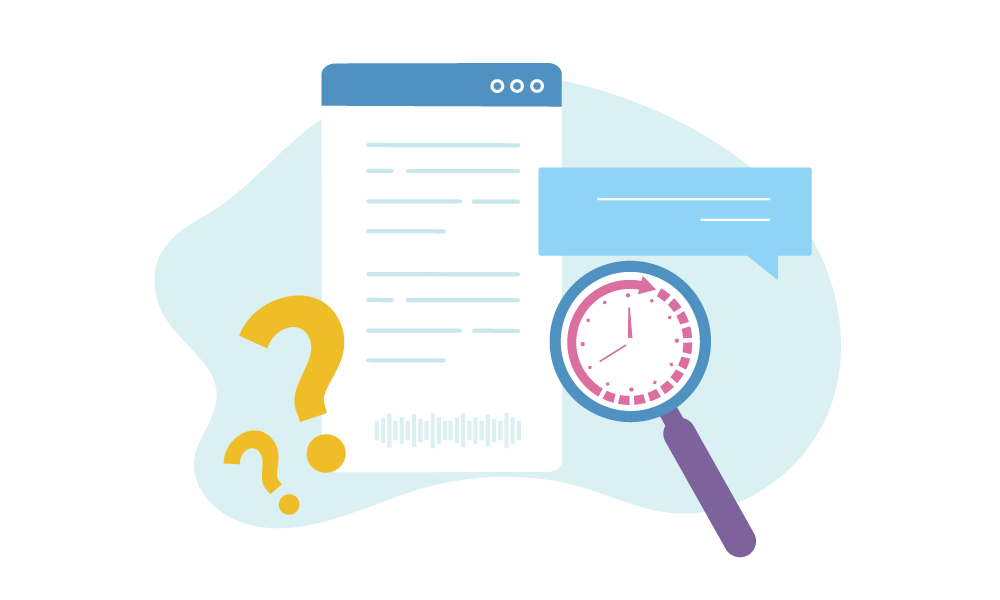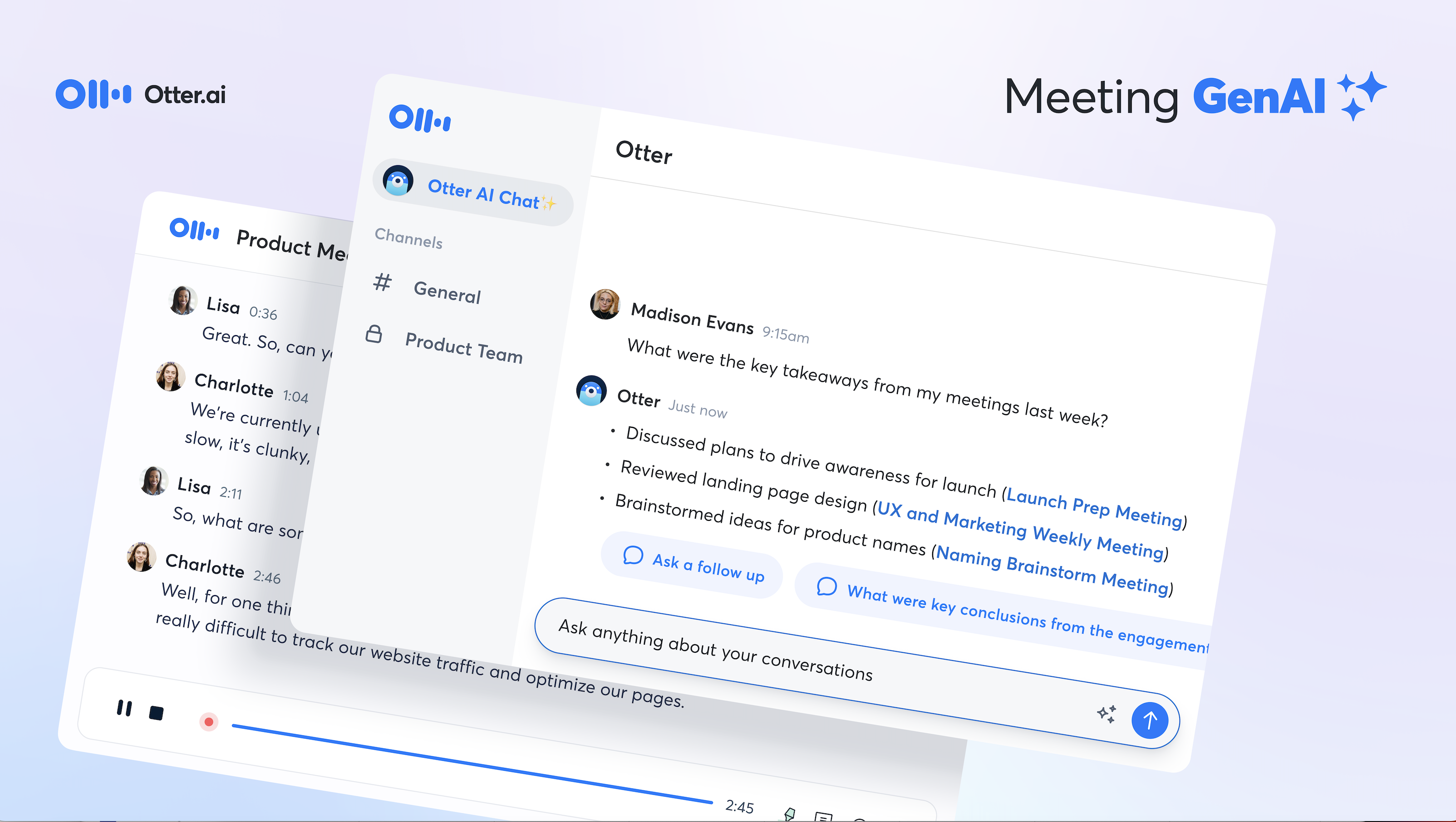For a number of professions, conducting interviews is an essential part of the job. Journalists, researchers, entertainers, students and even business managers may regularly conduct interviews as part of their daily work. The interviews can be job interviews, UX interviews, research interviews or journalistic interviews. This makes it crucial to not only carry out interviews effectively but also to record them accurately so that you can make the best use of the information you have gathered later.
However, recording interviews can be difficult. Poor sound quality, awkward pauses and lack of clarity can all become roadblocks when you listen to the recording. If you've been struggling with your interviews, or if you are preparing your first interview, we're going to explain the best ways to record high-quality interviews, including hardware & software recommendations.
Types of Interviews
You may have to engage in many different types of interviews in your position:
- Job Interview: An interview between an employer and a potential employee.
- UX Interview: An interview with a user of a program to discuss their experience and ease of use so the UX researcher can use that information.
- Research Interview: An interview used in market or scientific research that involves speaking with potential clients, customers or experts to determine their wants and needs.
- Journalistic Interview: An interview performed for the media. Typically, this is used to gather information and quotes for a story.
There is a broad range of formality, styles and skills needed to make sure that the interview flows perfectly. However, one aspect that is common for many interviews is the need to be recorded.
Why Record an Interview?
When you interview someone, you're getting a snapshot of their life experience directly from them. If you record an interview, you have permanent access to that first-hand information. For example, if a client explained what they needed from your product in an interview, you shouldn’t rely on your memory when relaying that information to your designers.
Whether your interview is in person or online, recording it ensures that you can use the information you get from your interviewee properly and make the best use of it for your business.
Additionally, recording information makes the interview easy to share. If an interview isn’t recorded, then it can only be shared through notes taken by the interviewer, which won’t be as effective as the direct audio of the interview. Recording the interview makes sure everything shared is first hand information, which is a more effective form of communication.
Finally, recording an interview allows you to be more engaged in the interview itself as you don’t need to worry about taking notes or marking down specific information. By recording, you are making sure that the interview has 100% of your attention in the moment, which will lead to a better result.
Why Transcribe an Interview Recording?
One of the main reasons to transcribe an interview recording is to turn the interview into searchable content. Having the interview as text instead of audio allows you to search for specific fragments or quotes rather than using clunky timestamps. Additionally, text is easier to show in reports, articles and more.

Another reason to transcribe is that reading is much faster than listening. People read about 100 words a minute faster than they speak, meaning that your collaborators will save time when they’re going over the interview. Additionally, if they miss something, they can simply go read back instead of having to scroll through audio.
The final reason to have a transcription of your interview is that it makes summarizing the interview much easier. Quotes and data are easily accessible and already in text format, meaning important takeaways can be noted and shared easily.
In-Person Interviews Vs Remote Interviews
When scheduling an interview with someone, one of your first considerations should be whether the interview is going to be in person or remote. Both have their strengths, and neither one is necessarily the wrong choice, but depending on the type of interview and your subject, one will be better than the other.
Strengths of In-Person Interviews
The main strength of in-person interviews is that many interviewees find them a lot more comfortable. It is easier to build rapport and chemistry with someone you're interviewing if they are in the same space as you. It is much easier to form a connection with an interviewee in person than online.
One other important point about in-person interviews is that you, as the interviewer, have much more control over aspects of the interview, like the sound quality and background noise. You have the opportunity to bring your own hardware and choose a quiet location, which is a major advantage over remote interviews.
Strengths of Remote Interviews
The key strength of remote interviews is accessibility. Many online programs will help you record remote interviews, and remotely performing your interview removes many of the barriers that can hinder an in-person interview, like scheduling and location. Remote interviews take up less of the interviewee’s time. Distance won't be an issue, so you are able to interview more people in different locations. Plus, in a pinch, you can always record a phone call as the interview.
Remote interviews are also cheaper to perform than in-person interviews, as they eliminate travel costs, and interviews can be performed much closer together than they can be in person. In addition, remote interviews enable both parties to maintain social distancing.
Finally, remote interviews remove the need to plan for and set up at interview locations, which can save both time and money.
What Are the Best Software and Hardware for Recording Interviews?

Audio Recording Software
There are three key functions that you need from your software when it comes to recording your interviews: transcription, audio/video editing and collaborative sharing.
When you're choosing software, it's important to know which type of interview you're performing. If you're interviewing someone in person and are planning to use your cell phone as one of your recording tools, you're going to need to make sure that the software on your phone is compatible with the other software you're using. If you're going to be recording with professional equipment that isn't connected to a phone, this isn't a concern.
When you need to work directly within the software for transcription and collaborative sharing, the first application to consider is Otter.ai.
Otter.ai records your meetings and transcribes them as you record. Additionally, Otter.ai has high-level collaboration tools, which will reduce the time it takes for the results of the interview to get to the people who need it. The interview transcription is easy to share and much simpler to work with than a full recorded interview.
Another strength of Otter.ai is that it can work with both active recordings and uploaded audio files, so even if you record using another service, you can use Otter.ai for transcription, collaboration and audio editing. If you're interested, you can sign up for Otter.ai's free trial here.
Audio Recording Hardware
Interview recording devices are primarily a concern for in-person interviews, as clients provide their own hardware in remote interviews. The best equipment for recording an in-person interview depends on the style of the interview, but here are our suggestions.
Digital Voice Recorder
If you’re looking for the best equipment for recording interviews in person that doesn’t require using your phone or setting up your laptop, we suggest the EVISTR Digital Voice Recorder, which is also Rolling Stone’s top choice. The recorder is compact, compatible with whatever machine you want to download the sound files into and has impeccable sound quality. It also comes in in an affordable and compact package. However, it's essential to keep a computer or smartphone on hand to deposit the audio into if you're planning on performing multiple interviews in a row.
Microphones
If you want to use your cell phone to record the interview, then our recommendation is the Comica CVM-WS50(H) Wireless Handheld Microphone. This microphone is a wireless powerhouse that acts like a traditional handheld microphone, which is perfect for journalistic interviews and for giving you more control in order to get the best sound quality as the interviewee speaks into the microphone. This microphone has a classic look and feel and is an excellent choice if you need a wireless microphone that is compatible with your phone.
Finally, if you're trying for a more conversational interview, like a podcast, then we agree with Music Radar that the Blue Microphones Yeti USB is the best option. The Yeti is compact, provides crystal-clear quality and comes with built-in directional settings. When it comes to recording two people having a natural conversation in a quiet space, it's almost impossible to beat the quality of the Yeti, especially at its price point.
Don’t forget that regardless of your equipment it's essential to always be prepared with a backup means of recording audio in case technical issues occur.
How to Keep the Interview Comfortable
People can feel uncomfortable when they’re being interviewed, especially when the interview is being recorded. But making sure that your interviewee is comfortable is an essential part of getting a successful interview since this will give you a more accurate impression of the interviewee and what they have to say. One of the most effective things that you can do to make sure everyone is comfortable is to book more time than you need. Taking ample time to talk to your subject and having time to wait between questions, if needed, is irreplaceable when it comes to maintaining comfort in the conversation. Nobody likes being rushed.
The second thing you can do is to make sure to set clear expectations with your subject before the interview starts. An interview is stressful enough without needing to correct someone on how they are speaking into the microphone. Set expectations early to make sure there is no need to break the flow of conversation.
How to Tackle Live Issues
No matter how much you prepare, there is always a chance that something will go wrong, technically or otherwise, when you're in the middle of the interview. Handling audio quality, recording or communication issues during an interview can be challenging. The best way to deal with them is to be honest about the problems and often to even use humor to lighten the atmosphere.
Though audio quality issues might be frustrating, keeping that frustration hidden will keep the interview on track, as you can keep the conversational flow going while troubleshooting to get the best sound quality. In case of issues that interrupt the interview altogether, it’s critical to remain calm and let your interviewee know that you’re pausing to troubleshoot. Acknowledging an issue and working on it is always going to be better than being distracted during the recorded interview. It avoids being impolite to your interviewee and hard to decipher transcriptions.
The first method you should try to troubleshoot audio issues in both in-person and remote interviews is to test another recording program. If the audio quality is better on the new program, continue the interview using the new program. If the issues persist, switch out your hardware to anything else you have.
Additionally, before you start an interview, you should spend time testing audio and video quality with your interviewee. This will assure that everything is set up on both sides of the conversation. If you’re remote, it’s also essential to establish a second channel of communication, such as texting, with your interviewee. This backup channel is vital in hardware and software failure cases, where it is used to coordinate a solution.
Medium-quality audio that is consistent is better than high-quality audio with constant issues. Inconsistent audio is often even more of a problem than bad sound quality.
It's always essential to have backup hardware, memory and recording devices prepared when recording, even if you’re just recording the conversation with a phone. Having more than one option will help ensure you don’t end up with an unusable interview.
Booking extra time for the interview is essential for more than just hardware and software issues. Sometimes an interviewee is uncomfortable during the interview. If an interviewee is having trouble, take the time to pause the interview and offer a minute of casual conversation. Booking the time you need for this kind of pause will assure that you won’t get subpar information from your subject.
When working with multiple interviewees at a time, explain at the beginning of the interview that each response needs proper lead time. Interviewers and interviewees speaking over one another will make interviewers hard to understand and impossible to transcribe. Establish the need for pauses within the audio recording at the starting of the interview. This will assure your recording is easy to understand.
In Summary
Whether you're interviewing in person or remotely, recording the audio and keeping track of your interviews is an essential part of the interview process. Programs like Otter.ai are flexible tools that will improve the quality of your recorded interviews and make them accessible for your entire team when they need them.







